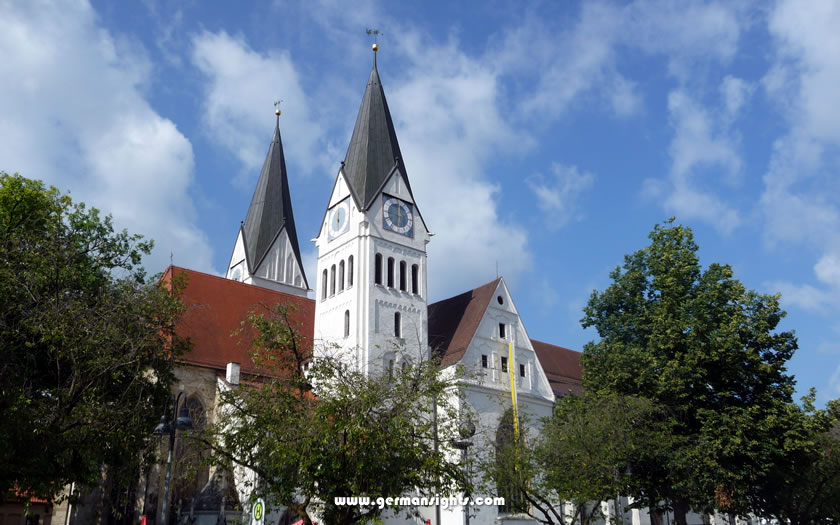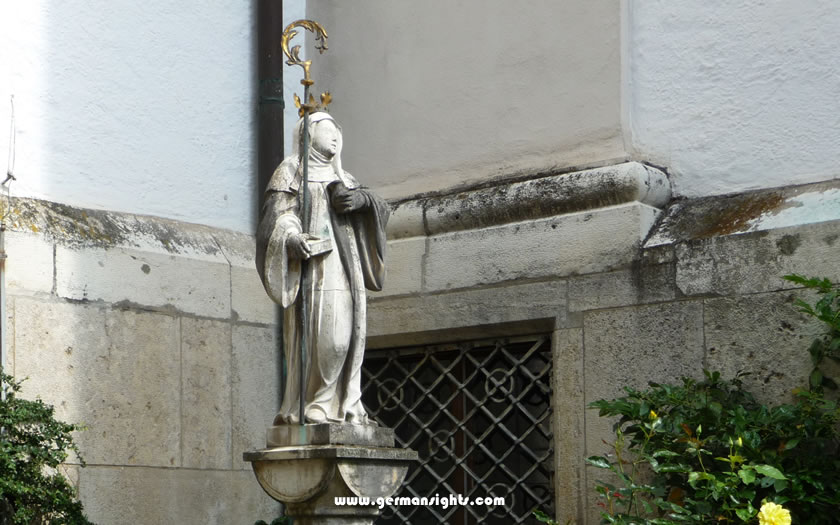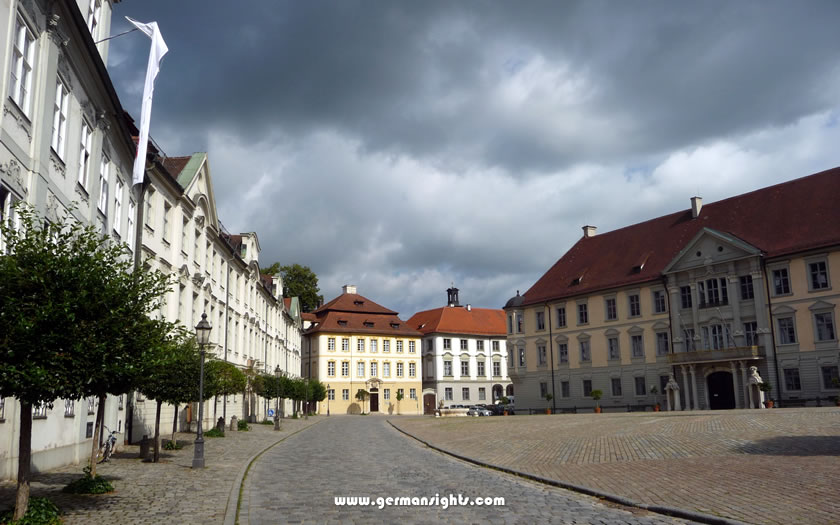Eichstätt is a historic city near the geographic centre of Bavaria. These days the city is possibly best-known as a starting point for a journey into the popular Altmühl valley nature reserve.
It houses the main information centre for the nature park and is an excellent option for a stay to explore both up and down the river.
However, those expecting to experience the natural attractions will be surprised at how much fascinating history and culture there is to explore in this relatively unknown Bavarian city.

Eichstätt Cathedral
Eichstätt is practically equidistant between Nuremberg and Munich airports. The low-cost alternative of Memmingen is around double the distance away.
Distance to Nuremberg Airport: 92km
Distance to Munich Airport: 99km
Distance to Memmingen Airport: 181km
Given the relatively similar distances and the ease of motorway and rail connections, the wide range of national and international flights definitely make Munich airport the top choice for arrival by air.
Eichstätt actually has two train stations:
The relatively 'unknown' town of Eichstätt to the north-east of Ingolstadt is an interesting spot to explore, with its religious history and buildings in the town centre.
If you know when you are planning to go but haven't decided on accommodation, then use the map below to get an idea of which properties are available and to compare prices during the period you wish to travel.
Enter your proposed dates and use the '+' to zoom in on a location and reveal more properties. Click on the price above a property to see more information.
(Please note that this selection will also include some guesthouses, pensions and self-catering apartments for those who are interested in that form of accommodation!)
Alternatively, if you would like a list of properties available on your proposed dates of travel, use the search box below to find accommodation:
The Celts and Romans both had settlements in the area around Eichstätt but the city is really associated with early Christianity in Germany and especially with the missionaries from Britain who spread their religion in the region during the 8th century.
One of the missionaries, St Willibald, was the first bishop of Eichstätt and built the first cathedral in the city. Following his death he was canonised and, a century later, the remains of his sister St Walburga were transferred and a convent was built on the site that became a popular place of pilgrimage in the Middle Ages.

Statue of St Walburga in Eichstätt
Both of the present buildings date from later times, however. The current cathedral has parts built between the 11th century and the 16th century and the current Benedictine Abbey of St Walburga is mostly from the 17th and the 18th century.
The town received its charter in the 11th century and it became one of the independent settlements ruled by a class of noble who combined religious and temporal power: the prince-bishops.
Eichstätt was familiarly known as the 'capital of Catholicism' in Germany and the prince-bishops ruled the city - and created many of its important present-day sights - through to the Napoleonic era.
It was heavily involved in the religious wars of the Middle Ages and much of the old town centre was razed to the ground during the battles of the Thirty Years War. The Baroque appearance of much of the city stems from the subsequent reconstruction during the 17th and 18th centuries.

The Residenzplatz square in Eichstätt
The Residence in the centre was first the seat of the prince-bishops and then, when they lost their power and independence, of the Count of Leuchtenberg in the 19th century. (It is now a regional administrative building).
After the secularisation of the Napoleonic era Eichstätt lost its power and independence and became part of Bavaria. Its position as a relative backwater between the more important cities of Munich, Nuremberg and Ingolstadt meant that industrialisation passed the settlement by and that it was spared much of the destruction of the wars of the 20th century.
The city tourist office, located near the cathedral, offers a leaflet (in German) with a self-guided walking tour around the most important sights, while the information centre for the Altmühltal is located just outside the centre near the old city walls.
Tourist Office: www.eichstaett.de (German only)